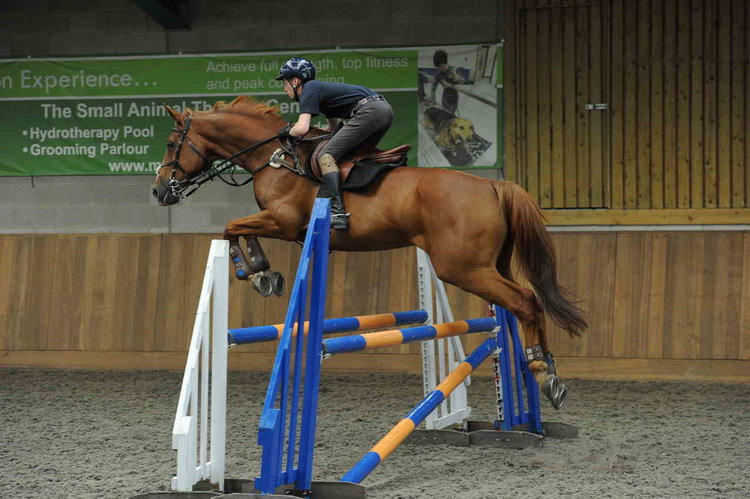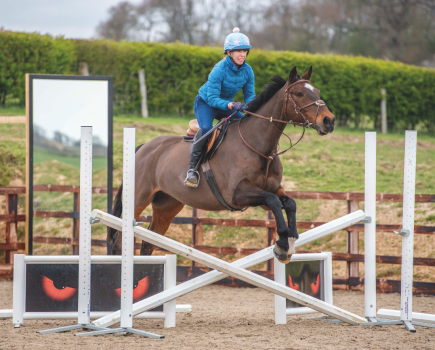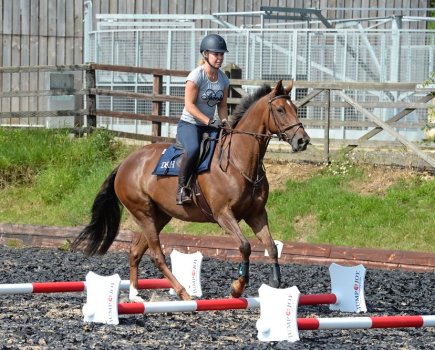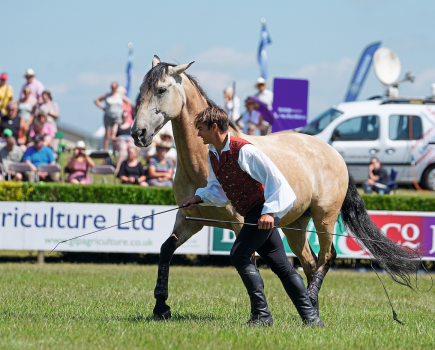Competing through the winter months helps you stay focused and motivated, or just allows you to have some fun with your horse. But it does introduce a variety of challenges, whether you’re a showjumper, eventer or dressage guru. Of course, arenas are different sizes, but it makes sense that the smaller the arena, the harder it becomes, particularly if you’re jumping.
Eventer Barry Meningen shows us how to deal with the tighter corners, closer-together jumps and distractions an indoor school brings.
Why indoors is different
“For the combination tackling fences, the first thing we have to cope with is a cluttered arena,” explains Barry. “This becomes even more troublesome when competing in arena eventing, where there are showjumping and cross-country fences to negotiate – there can be up to 20 of them and it’s not always easy to see which is coming next.
“Even though you may have 20 fences to jump, there could be more still in the arena, to take into account classes of different heights. This can cause issues because the fence your horse locks on to next, as he lands, might look like the obvious next fence to them, but it could well not be.”
Your horse will need to wait for instructions from you, but also be prepared to think for himself when needed – both things you can practise at home. They also need to be balanced to deal with all the tight turns involved.
“One problem I see is horses backing off fences because they’re jumping towards the wall,” says Barry. “They don’t realise you’re making a turn on landing and may have lost all impulsion before they get to the fence, which could lead to a stop or knockdown. Being able to keep them forward throughout the round is essential.”
Perfect your indoor jumping technique
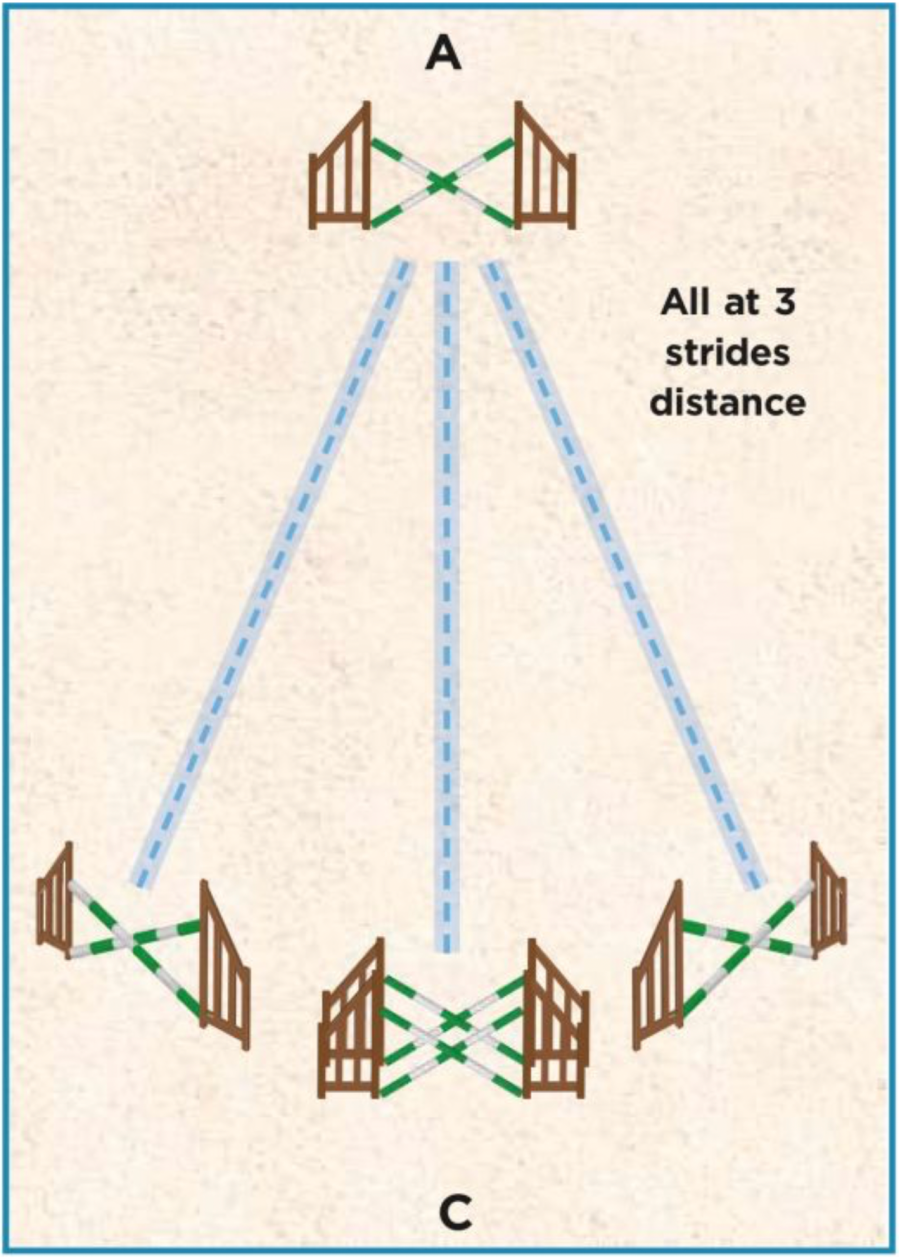
How to set up the fences
“There’s lots you can do at home to prepare for jumping at an indoor competition, and I want to share one of my favourite exercises with you,” says Barry. “You only need five sets of wings and 10 poles, but it allows you to practise different aspects of jumping that will really help once you’re in the ring.”
To set up this exercise, place a cross-pole on the centre line towards the A end of the arena, a double cross-pole towards the C end of the arena, and two other cross-poles placed either side of this an an angle. The three fences at the C end should be three strides away from the one at A. (See diagram).
Set up the cross-poles at a height your horse is capable of and comfortable with.
Exercise 1
- After warming up, turn onto the centre line and ride straight down over the two fences at A and C. You can trot into the fence if your horse is young or inexperienced, and pick up canter as they land.
- The turn onto the centre line will be tight, so use your inside leg and outside rein to help your horse balance without losing impulsion.
- Keep your horse straight and remember to aim for three strides.
- Turn as soon as you land over the second fence to mimic what you’ll face indoors.
- Ride this exercise on both reins – starting on the rein your horse finds easiest.
Exercise 2
This time, you’ll make sure of all three of the fences at the C end of the arena.
- As you turn onto the centre line, decide which fence you’re going to jump at C – middle, left or right. Your horse will be anticipating going straight down the centre line as they’ve done this a few times in the previous exercise.
- As you take off, put a little more weight into your left stirrup if you’re aiming for the jump on the left, or your right stirrup to jump the fence on your right. Stay even for the one straight ahead. This indicates to your horse which way you want them to go on landing. This requires quick thinking, which is perfect for preparing to ride at competitions.
- Remember to count your three strides between the fences.
- Repeat this exercise a number of times, each time mixing up which of the fences you jump to keep your horse listening.
Exercise 3
This requires the help of a friend, and is a step-up from the previous exercise.
- As you turn onto the centre line, your friend should shout out which fence they want you to aim for, changing it each time.
- Turn tightly on the centre line so you don’t have a lot of time to think. This will test your reactions and ability to direct your horse whilst keeping them focused and straight. It will also test how responsive your horse is to your aids.
- As soon as you land over the second fence, make a tight turn. Ride the exercise on both reins, checking your horse is balanced throughout.
Meet the expert: Barry Meningen is a UKCC-qualified British Eventing coach. He trains pony and riding clubs and is a BE80(T) coach. He has competed up to advanced level on home-produced horses and also in pure show jumping and dressage.
Don’t miss the latest issue of Your Horse Magazine, jam-packed with training and veterinary advice, horse-care tips and the latest equestrian products available on shop shelves, on sale now.
Find out what’s inside the latest issue of Your Horse
Check out our Christmas subscription offer – the perfect gift for a horse lover!

